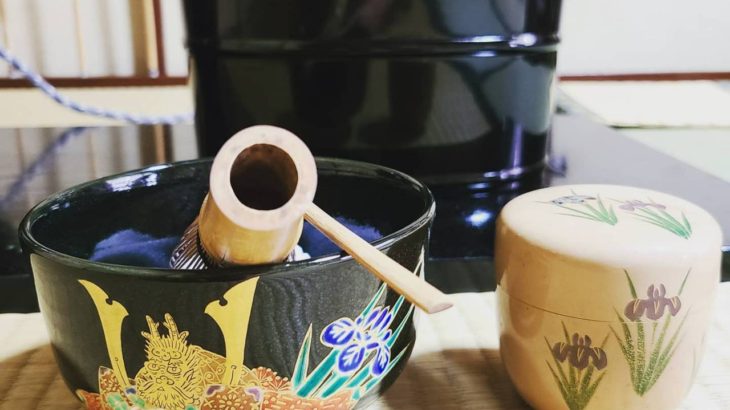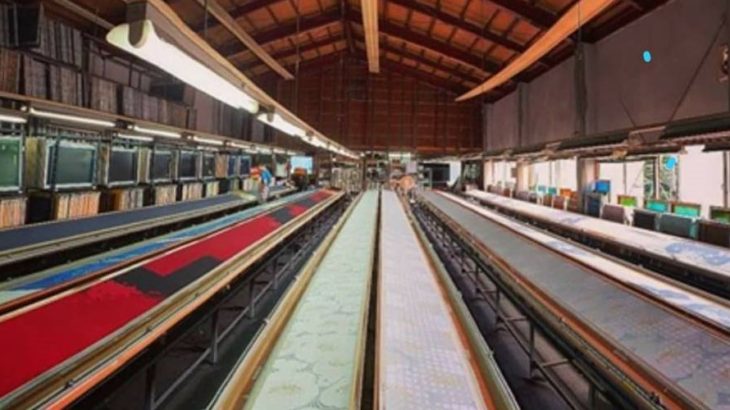Hello, this is Shinji from “Warashibe-choja.jp”. This time, I talked a little about it last time, so let’s talk about the basics of Japanese tea ceremony. I think there are some differences depending on the school, but I hope you will know how to enjoy the tea ceremony. Speaking of Japanese tea ceremony, I think that many people have the image of sitting upright in a tatami room. There is also a tea ceremony with chairs called Ryurei-shiki and an outdoor tea ceremony called Nodate. I think it will be interesting even if you experience it once. There are “Okoi-Cha” and “Ousu-Cha” in Japanese tea, but this time I will write about “Ousu-Cha”.
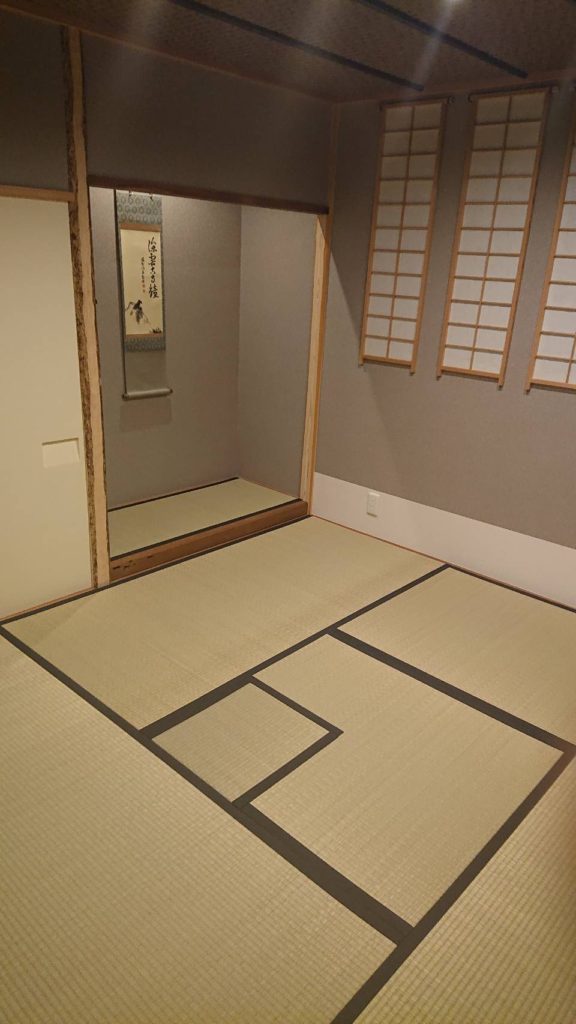
1, What you need at a Japanese tea ceremony
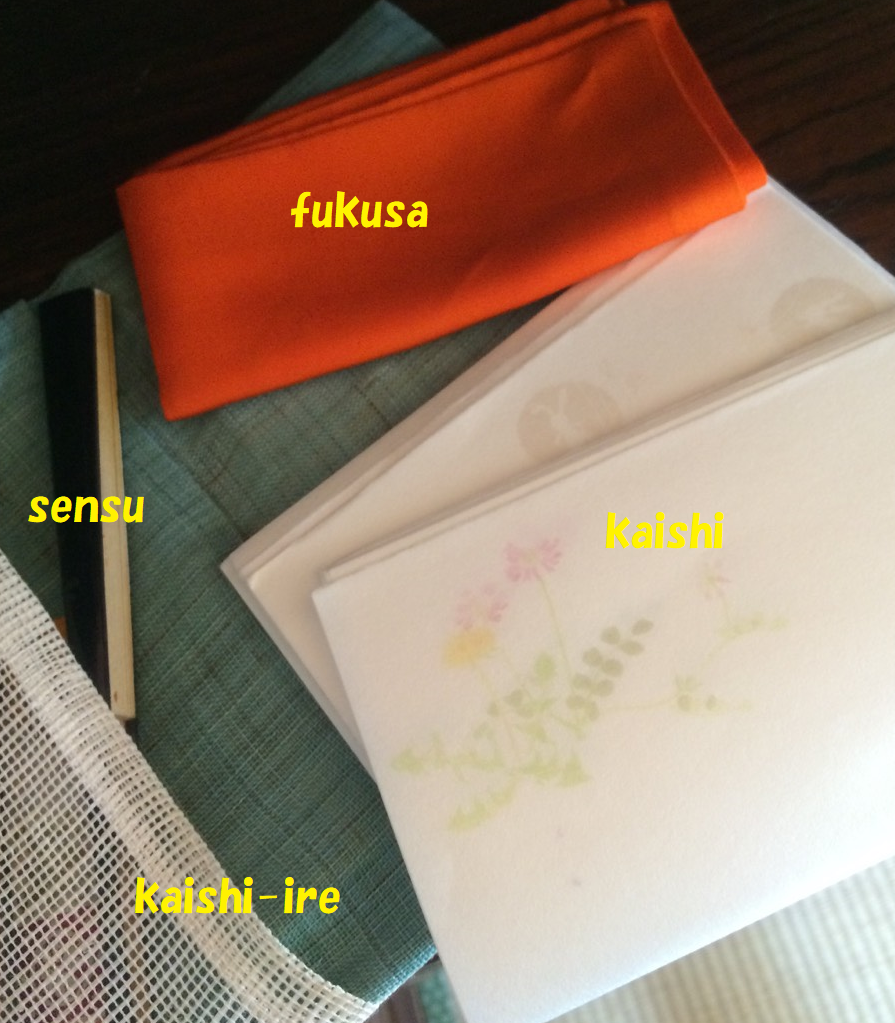
Fukusa
If you are practicing otemae (= how to make tea), you should have it. It is used to wipe and clean the tea utensils and to see the tea utensils. There are various colors, but the color may be decided depending on the school such as Omotesenke.
Sensu ( = Folding fan )
It is used by placing it in front of your lap when bowing for greetings at the beginning and end of the lesson. A kekkai (= Barrier) is created at the distance from the other party to express the feeling of respect for the other party. There are different types depending on the school, so please prepare the one that suits you. By the way, the fan of the tea ceremony does not spread or blow the wind. There are various details, but please keep in mind only two points: “do not unfold the fan nor use it to blow the wind.” and “put it in front of your lap and give a greeting”.
Kaishi ( = Paper instead of handkerchief )
It is used like a plate when you have sweets at a Japanese tea ceremony, or to wipe your mouth. Since it is disposable, you can use a cheap plain one, but recently there are some fashionable patterns, so you can use that one for a casual tea ceremony. Originally I used it to write haiku on the paper I had in my pocket, so some people use it to write the name of tea. However, please note that some people find it unpleasant to write on kaishi.
Youji ( = Confectionery toothpick )
When eating tea confectionery, use it like a fork. In the tea ceremony, it is basic to prepare it yourself. Some are made of stainless steel that can be used many times, and some are disposable wooden ones. Wipe the used toothpick with kaishi, put it in the toothpick holder and take it home, so it is convenient to have a toothpick holder.
Kaishi-ire ( = Fukusabasami )
It will be a container to carry what you need at the tea ceremony. Put fukusa, kaishi, toothpicks, folding fans, etc. in this and carry it around. There are various designs, so please find your favorite. It is also recommended to choose according to your kimono or bag.
About manners
How to eat sweets
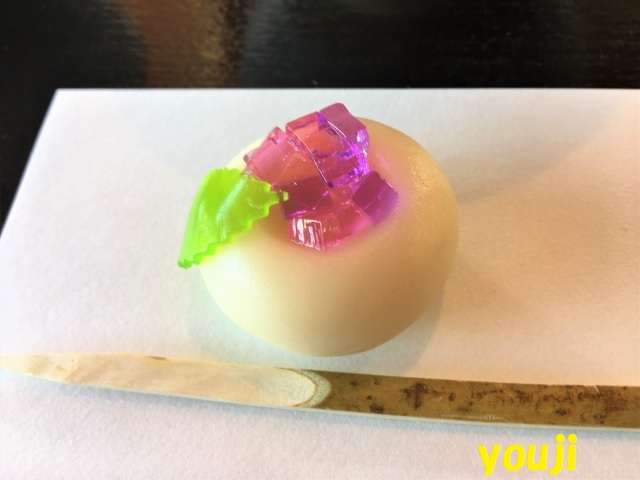
At the tea ceremony, sweets are brought in front of you. The side (host) who provides hospitality is called Teishu, and the customer side reaches for sweets after being told “Please have sweets”. When you receive sweets, be sure to tell the next guest “Osakini” (= I will do it first), then lift the sweets bowl a little with both hands, bow your head lightly, and thank the gods and Buddha.
Fold kaishi in two, turn the ring toward yourself, place it between yourself and the candy bowl, and take one with chopsticks. If you have multiple sweets, put them on kaishi one by one. Wipe the chopsticks with the edge of the kaishi on which the candy is placed, and then put it back in the candy bowl.
After handing the bowl to the next person, carry the sweets together with kaishi to your mouth, cut them with a toothpick, and stab them lightly. It is a good practice to eat sweets before drinking matcha. kaishi will be taken home with a toothpick.
How to get Japanese tea
The tea will be brought to you after you finish eating. In the same way, say “Osakini” to the next guest, tell the host “Otemae-Chodai-shimasu”, bow down and lightly raise the bowl, and thank the gods and Buddha.
Place the bowl on your left hand and attach your right hand. When the bowl is served, the front is facing you. There are often pictures. Teishu faces the front to the customer, but the customer avoids the front to drink in order to cherish the bowl. Makeup and other oils will stick to the front to prevent it from getting dirty. It depends on the school, but the bowl is turned in two steps.
Ideally, you should drink three and a half mouths, but you can drink before or after. When you have finished drinking, lightly wipe the mouth with your right thumb and index finger, and wipe your hands with kaishi. Turn the bowl in the opposite direction of the previous turn, and place the bowl with the front side back to the Teishu side.
Ichigo-ichie ( = Cherish only one encounter )
There is a word “Ichigo-ichie” in the knowledge of tea. It means that the people who gather at this time will never be the same again, but only at this time. It is also recommended to take off the clock at the tea ceremony in the sense that “it is rude to care about time for Teishu’s hospitality”. Also, be careful of metal items such as rings, as it may not damage the tea bowls of the tea ceremony.
Seeing tea utensils
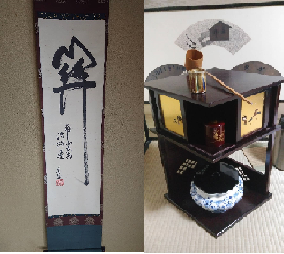
At the tea ceremony, seeing the tools is one of the etiquettes. Teishu prepares tools according to the four seasons, literary calendar, and theme. This is called “Shitsurae”. At the formal tea ceremony, Syo-kyaku (= customer representative) takes Teishu’s thoughts and asks about the meaning of Shitsurae. It’s not a shame that I don’t know, “What kind of bowl did you drink? And “What are the characters of Kakemono written?” It is one of the etiquettes to ask various things, so please do ask it.
This time, I introduced a simple method of tea ceremony. I would like to continue to come into contact with various Japanese cultures. I hope you enjoy reading it.
